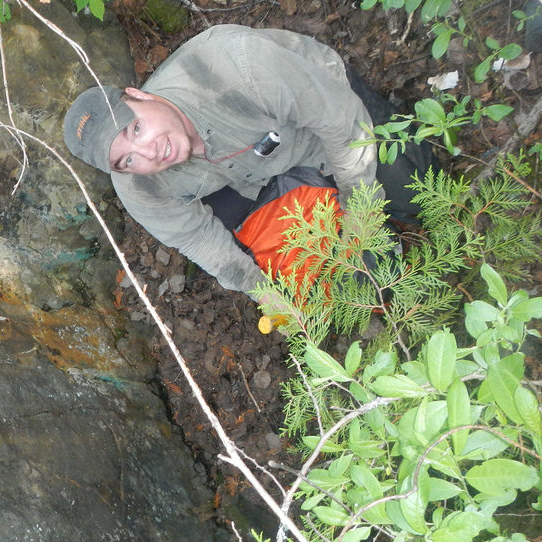Competing for cobalt

A prospector digs around at Cruz Cobalt's high-grade cobalt Johnson project. — Photo courtesy Cruz Cobalt With electric fleets increasing in mining a
A prospector digs around at Cruz Cobalt's high-grade cobalt Johnson project. — Photo courtesy Cruz Cobalt
With electric fleets increasing in mining and energy operations, as well as more electric vehicles in public use, we have to wonder: where will all these batteries come from? Lithium is the most well-known component of these batteries, but nickel, graphite and cobalt are also necessary.
Two years ago, Vancouver-based Cruz Cobalt examined all of the battery components of the electric vehicle industry. At that point, no one was talking about cobalt yet, despite its dollar value in weight exceeding lithium from a business perspective and its necessity to the future of renewable vehicles. “There hasn’t been a new (cobalt) mine in 45 years in North America,” said James Nelson, president of Cruz Cobalt.
Now, people are becoming more aware of the sparsity of cobalt, as 65 per cent of the world’s cobalt comes from the Congo—a politically unstable country with extremely unsafe mining environments. “It’s never good to have that much of a concentration in any one country, let alone a country that’s politically unstable,” said Nelson.
Cruz took this opportunity to explore cobalt deposits in North America before others caught on. The company evaluated 250 mineral files before settling on its current number: nine prospects will be developed further before choosing one or two to focus on.
“We tried to find the highest grade of historic data, get those properties, then work on them to prove the numbers,” Nelson said. “Now, everyone is at the same point trying to see what they have.”
When we understand the scarcity of cobalt, the instability of the Congo and its necessity in the best batteries currently available, we see the problem with the sweeping statements some electric car companies have made recently. Despite all the demand for production, these companies can’t produce their cars without cobalt batteries.
“For example, Telsa saying they are going to do 500,000 cars—there aren’t enough batteries to do that. There are not enough raw materials,” said Nelson.
These statements are made before actual production and are currently nearly impossible to execute.
Cruz has noticed an increase in lithium, graphite and cobalt stocks internationally. “People are realizing that with these electric cars, it’s the battery—not the car,” he said.
But as the price of any commodity goes up, people look for alternatives.
“It’s like the oilsands 15 years ago,” said Nelson. “We had 10 people a day telling us they could get the oil from the sands cheaper than what we were doing. No one could do it at scale.”
Giga-factories like Tesla’s are designed to assemble cobalt batteries on five- to 10-year plans.
“Once you build the infrastructure for a specific set up, it’s like turning an oil tanker around on a dime—it doesn’t happen," said Nelson. "It takes time. It’s slow and methodical.”
The current demand for cobalt is so high that even Cruz’s exploration-stage prospects have garnered international interest.
“We’ve had a lot of interest, mainly out of China. They say they will buy any cobalt we can produce. At this point, if anybody has cobalt that is battery grade, they will be able to sell anything they can produce,” Nelson said.
Nelson stresses that the demand for cobalt is not for just electric cars—it’s in batteries we use daily.
“It’s in smaller percentages, but it’s still the element of choice to keep the charges going,” he said. “This industry is going to be huge. It could be one of the biggest money makers that we’ve seen in a long time.” The key is finding battery-grade cobalt outside of the Congo.
A cobalt mine averages three to five years from discovery to production. As Cruz continues to develop its prospects in Ontario, Canada is on track to meet some of the world-wide demand for battery components. “If the price of cobalt continues to move as it has, we will be in a really good spot when the whole market decides they want to have a cobalt company as well.”


